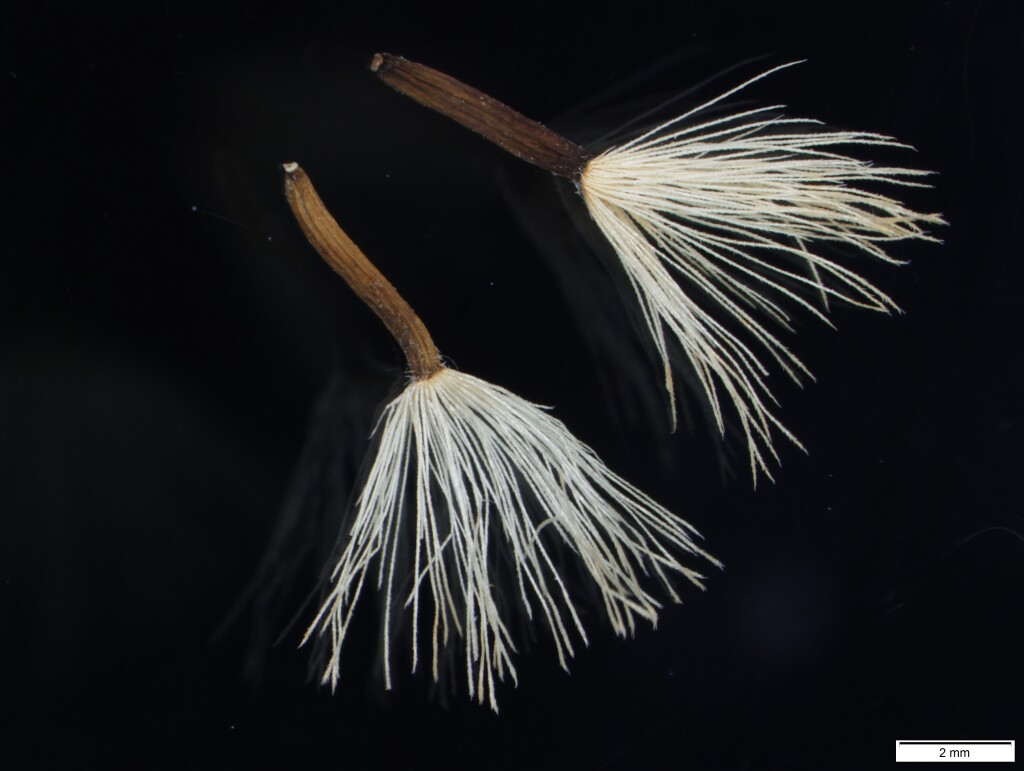Olearia megalophylla
(F.Muell.) F.Muell. ex Benth.Spreading, probably rhizomatous shrub to c. 1.5 m; branchlets and leaf undersurfaces often tawny, densely felted with Y-shaped hairs. Leaves opposite, ovate to narrow-elliptic, mostly 60–130 mm long and 10–35 mm wide, obtuse, flat, upper surface dark green, glabrous, conspicuously reticulate-veined; petiole to c. 20 mm long. Capitula 20–35 mm diam., in corymbs; peduncles typically 20–60 mm long; involucre cup-shaped, 7–9 mm long; bracts 3–4-seriate, graduating, sericeous, often purple-tipped. Ray florets (5–)6–9, white, ligules 8–14 mm long; disc florets 9–14, yellow. Cypsela cylindric, 6-ribbed, 4–5 mm long, glabrous or sparsely sericeous near apex; pappus bristles white, straw-coloured or pinkish, 5–8 mm long. Flowers Dec.–Feb.
EGU, HSF, HNF, MonT, HFE, VAlp. Also NSW. Scattered in montane and subalpine forests and woodlands (usually dominated by Eucalyptus delegatensis or E. pauciflora) east from about Lake Mountain.
Narrow-leaved specimens approach O. alpicola and O. aglossa but can usually be distinguished by the woollier indumentum, the reticulate-veined leaves capitula with larger involucre and longer ligules.
Walsh, N.G.; Lander, N.S. (1999). Olearia. In: Walsh, N.G.; Entwisle, T.J., Flora of Victoria Vol. 4, Cornaceae to Asteraceae, pp. 886–912. Inkata Press, Melbourne.
 Spinning
Spinning
